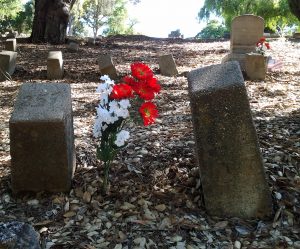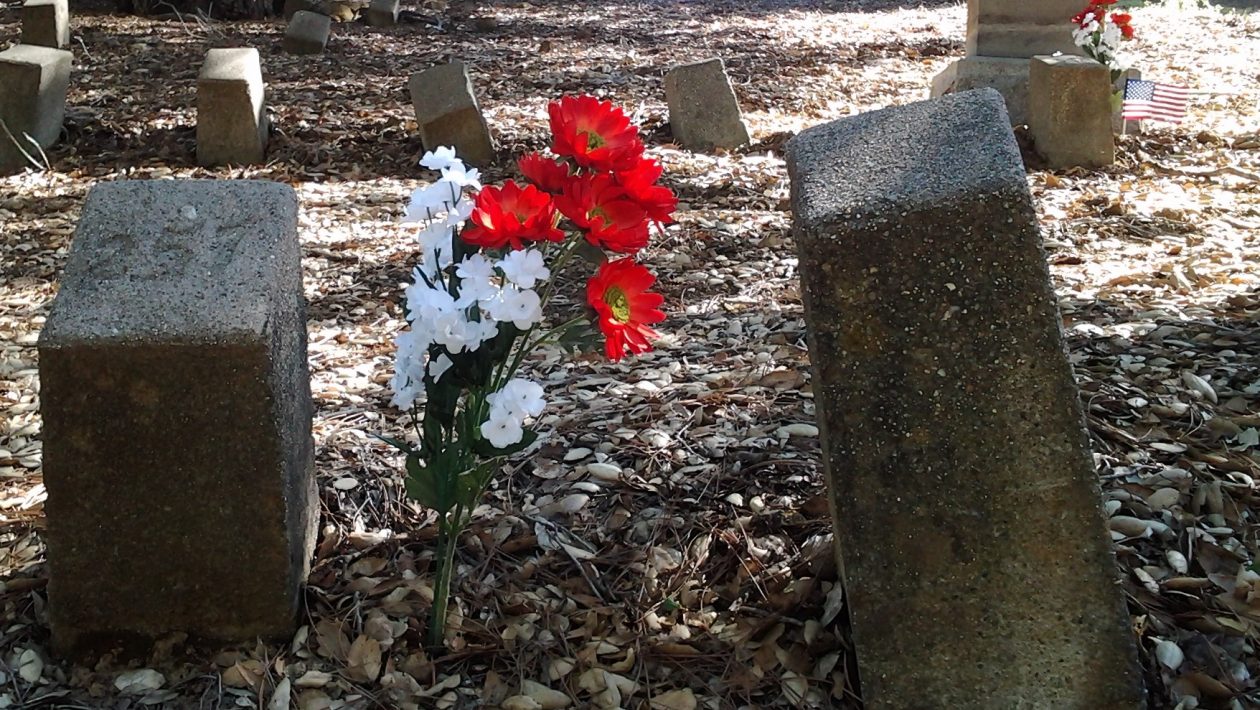By JOSEPH & JUDIE PALMER
Martinez Gazette Contributors

We apologize for not writing since last May, but circumstances arose that put our column on hold. In celebration of Black History Month, we wanted to complete Aaron Rice’s story. However due to the time gap, we thought it best to summarize his saga in a few installments before finishing his story with the last. For new readers, we welcome you. For our devoted fans, we thank you for your patience. With that let’s begin…
Aaron Rice was born enslaved on January, 1819, Caswell County, North Carolina to his mother Dilcy and father Robert Rice. They were the property of Archibald and Sally Jane Rice, who at the time owned a cotton farm. To piece together Aaron’s story prior to 1860, we had to rely on oral histories and infer from other documentation related to their owners because there was no census data and very little records kept on the enslaved until after slavery was abolished.
From a number of sources we know that the Rices moved from N Carolina to Missouri in October 1826. For the next 10 years, they relocated several times before finally settling on 160 acres in Raytown, 8 miles from Independence on the Santa Fe Trail, when Aaron was 17. By 1838, they had cleared the land, built their home and established crops of corn and wheat. By 1844, they replaced their two-story log cabin with a gothic-style farmhouse that is still standing today.
For those of you familiar with the popular 1985 computer game “The Oregon Trail”, the starting point could easily have been represented by the “5 star rated” Rice farm. It offered travelers bound for Santa Fe and California, space for wagons, springs for watering, and grazing fields for feeding animals. Numerous accounts speak favorably of the Rice’s hospitality with Aaron most likely taking care of their animals and livestock. During 1849 alone about 490 men and 132 wagons lingered at the Rice campground.
On February 26, 1840, the Rice’s son William marries Louisa Ish, a native of La Fayette County, Missouri, and moves about five miles outside of Independence. As was custom to give slaves as wedding presents, we believe this is how Aaron and his family became William’s property.
Because of William and his family’s involvement in the violent, bloody events of Missouri and Kansas, they choose to flee in order to avoid prosecution. From his own account, William leaves on April 28, 1859 for California with his wife and children, 890 head of cattle, 6 wagons, 24 oxen, an ambulance, 30 head of horses and mules, 17 hired men and 6 Negroes. From other records, we know this to be Aaron, his parents Robert and Dilcy, wife Charlotte, sons Nathaniel (born 1846) and Lewis (born 1850). William’s family on the other hand fled to Texas taking with them Aaron’s brother William and his family and perhaps their sister (although she disappears leaving her fate unknown).
Again, for anyone who played “The Oregon Trail” you have an idea of what the approximate 3,000-mile harrowing journey was like for the Rice families. There were losses of livestock due to theft and death, losses of equipment due to damage, bouts of Cholera, and more. When they finally reached the Sacramento Valley, William had only four wagons left, the family coach, some cattle and a man or two.
It was late 1859 when they finally arrived in Napa. William rents land from former Missouri Gov. Lilburn Boggs who dies soon after on March 19, 1860. His widow sells William (who departs soon after with Aaron’s son Nathanial to establish his ranch in Walnut Creek) the land along with at least three other slaves whom (with Aaron and the rest of his family) are left in her custody to work his farm.
In April, the highly influential and powerful abolitionist Rev. Thomas Starr-King visits Aaron and the others working the farm. There we believe he apprises them of their rights and freedom, as California is a free state. However, the California Fugitive Slave law of 1852 left African-Americans in limbo as they were considered neither slave nor citizen. Aaron and his family chose to stay while the rest left immediately.
We believe Aaron’s family stayed behind to regain custody of Nathaniel, prevent the law from being applied against them, and finally receive payment for services rendered from William. The US Census from July 12 lists William 46, living in Napa City in Napa County, farmer, with a personal estate of $14,225 and Aaron’s son Nathaniel 14 as a servant. Meanwhile on July 23, Aaron and his family are enumerated for the first time. The Census lists Aaron 45, day laborer; his wife Charlotte 48, servant; and their son Louis12, (actually 10) all living in Napa with no personal wealth noted. However, Aaron’s parents Robert and Dilcy remained unrecorded.
Unfortunately, William refuses to release Nathaniel. On August 12, believing his family was done with their bondage contracts, Aaron finds the courage to press charges against William (despite the odds stacked against him) risking his own potential imprisonment. Until 1873, state law considered African-Americans inferior to Whites, thereby preventing Aaron from testifying. As a result on August 20, he losses and is jailed for (ironically) perjury. Fortunately, his friends exchanged their labor as payment for his $500 bail ($15,000 today) thereby limiting his confinement to overnight. His case becomes well known, as he was one of only four former slaves to ever sue their former master in the great state of California.
How long Nathaniel was forced to stay under William’s custody is unknown. However, a month later on September 17, 1860, Charlotte and Robert buy a 160-acre farm for $100 ($3,000 today) from William Russell. Probably Aaron was excluded from the deed due to his newly acquired record. Despite limited opportunities available to them, Aaron’s family quickly earned the ability to purchase property, forging a new and exciting chapter for themselves….
We are Judie and Joseph Palmer, two of the founding members of the Potter’s Field Project. Both of us have a passion for discovery, history, genealogy, anthropology and archaeology. For more info, please visit our website MartinezCemetery.org. To learn more regarding our sources and detail about Aaron’s life, type Aaron Rice in the Search Bar. Do you have a Potter’s Field story to tell? We welcome any pictures or information regarding the Alhambra Cemetery’s Potter’s Field. Please email us at martinezcemetery@gmail.com or call us at (925) 316-6069.





